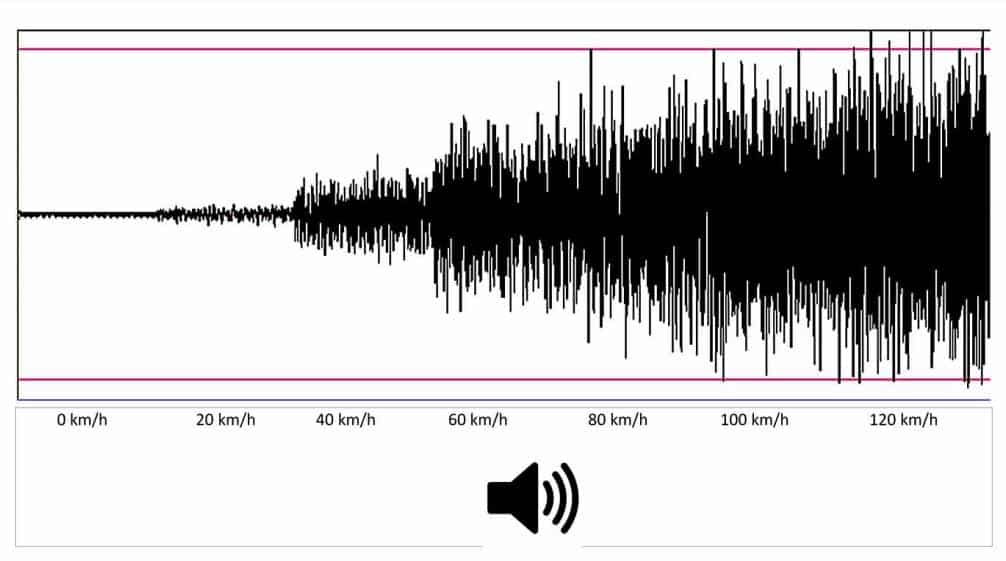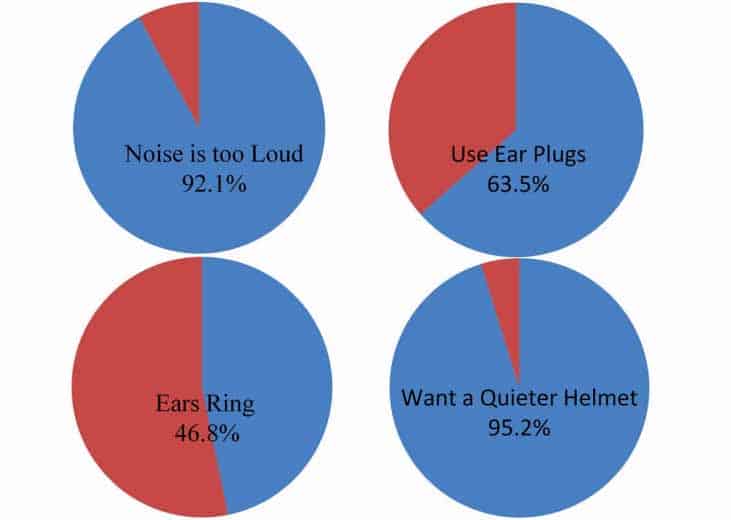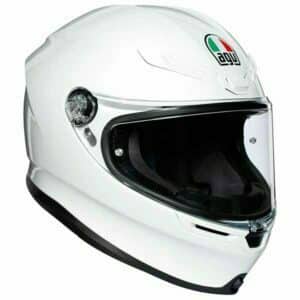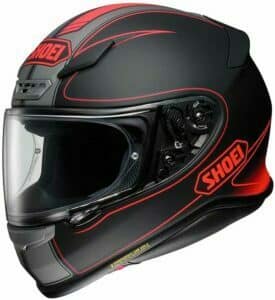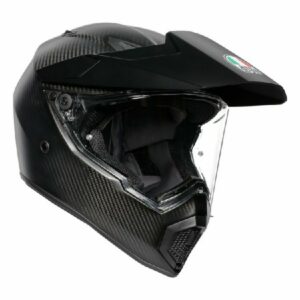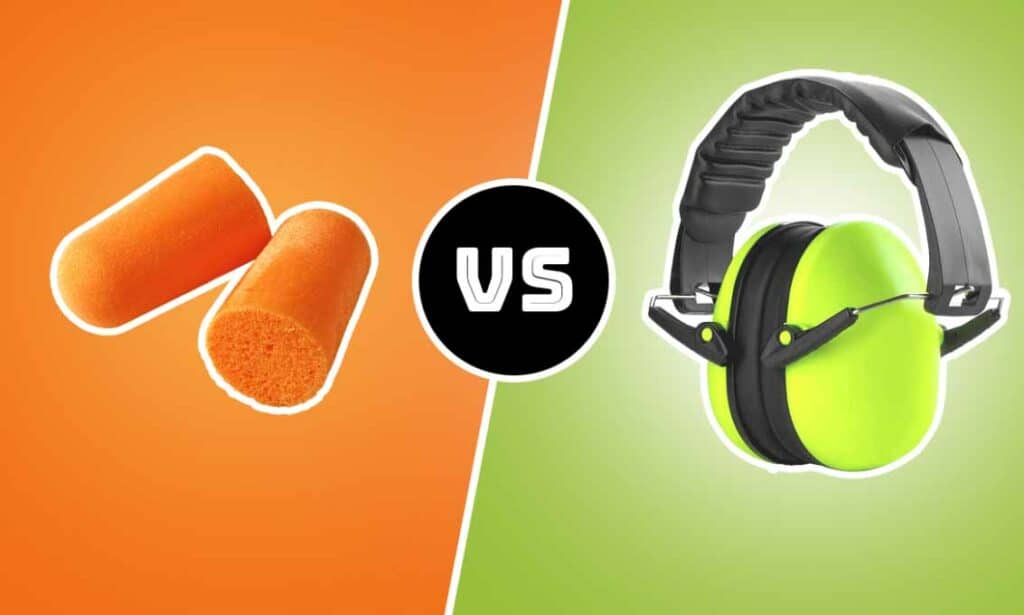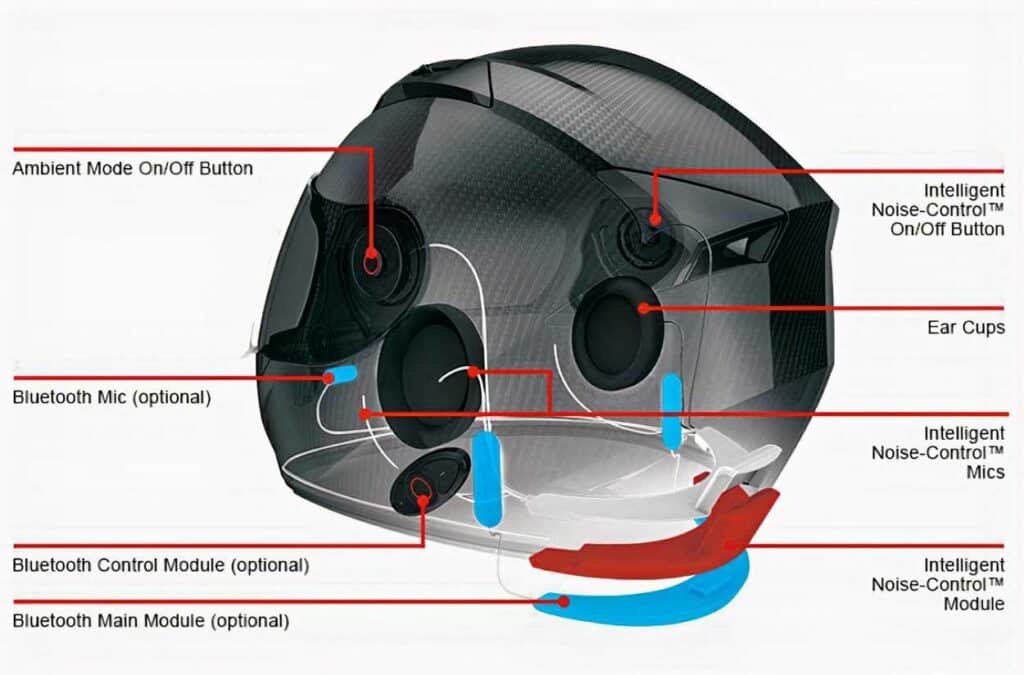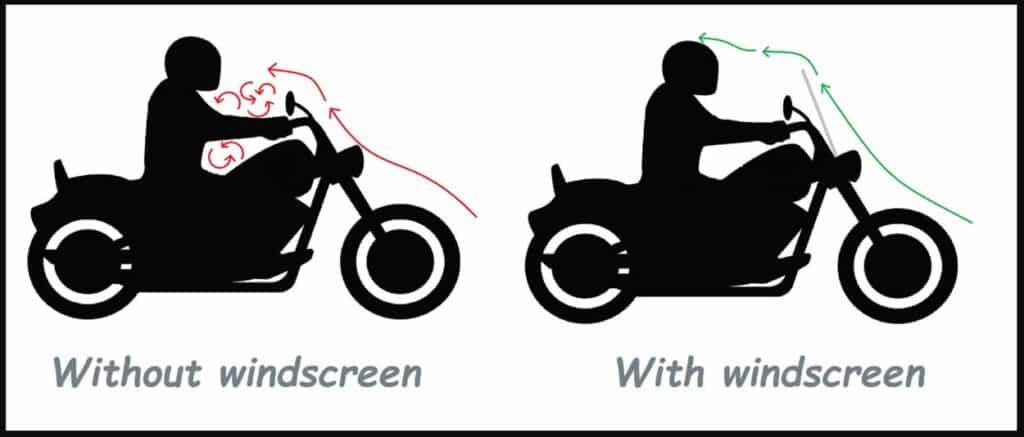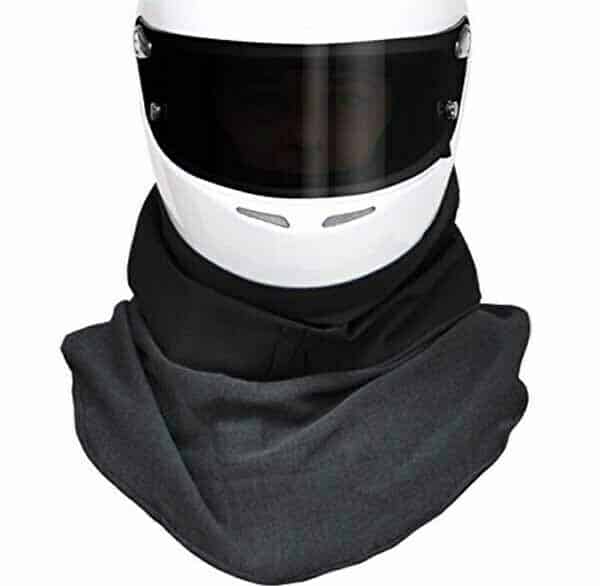We make it a point to suit up when we go for a ride as responsible motorcycle rider. Even if it’s only for a 10-minute journey to and from the neighborhood supermarket. However, most of us overlook one portion of our body: the ears, which contribute to our five senses.
When we ride, we are exposed to a lot of loud noises. It might be caused by other cars on the road, noisy exhaust pipes, or other factors. But there is one form of sound that can be extremely harmful to hearing over time: Wind Noise.
What Is Wind Noise? Is Wind Noise Normal in a Helmet?
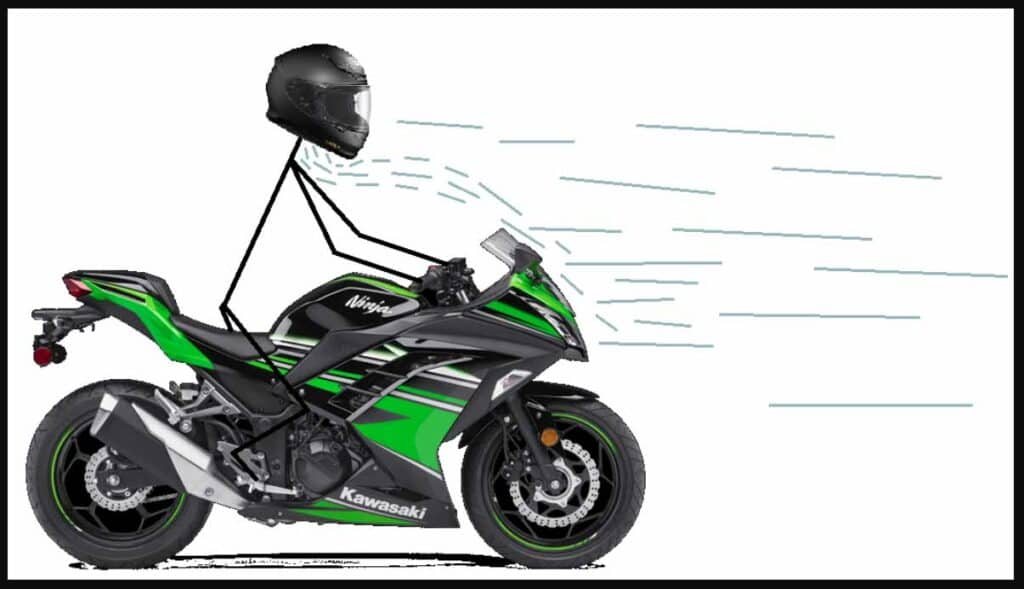
Wind noise is the sound made by the wind when it collides with a solid surface and is taken up by our eardrums as vibrations.
When riding a motorcycle, you often move at high speeds, creating a significant wind force that impacts your helmet. This produces a loud noise that may cause eardrum damage.
Another dangerous source of sound that is conveyed through your body is motorcycle engine vibration. Because it vibrates through your bones and into your ears, this loud vibration is impossible to avoid.
How Is Wind Noise Measured?
Decibels (dB) is a logarithmic scale used to quantify sound. A whisper is roughly 30 decibels, a regular conversation is about 60 decibels, a motorcycle engine running is about 95 decibels, and wind noise ranges from 84.9 decibels at 10 mph to 120.3 decibels at 60 mph.
When riding at 62 mph, the wind noise level in most motorcycle helmets may reach 95 to 105 decibels, and it becomes louder as you ride faster, which is not good for your eardrums. The difference between 95 and 105 dB doesn’t seem like much until you remember it’s a logarithmic scale, so a small increase near the top means sound could easily quadruple in loudness.
What Are the Different Types of Helmet Wind Noise?
My experience has demonstrated that there are three types of helmet noise:
- Low frequency (booming) noise
- Mid-tone (wind rustling) nose
- High frequency (whistling) noise
Each rider’s tolerance for these noises is different. Low frequency or “booming” noises, which are mainly created by turbulence around the lower regions of the helmet around the chin and neck area, are, in our opinion, the most bothersome.
Certain types of windscreens and fairings may considerably worsen this noise, particularly on sports motorcycles where the wind is dumped on the rider in a way that can generate turbulence around the bottom and back areas of the helmet.
Correct helmet fit and size are also critical. If the “quietest helmet in the world” (if there is one) didn’t fit properly, it wouldn’t be such. The rider’s head shape and profile, particularly around the neck, must be accommodated by the helmet.
How Can Wind Noise Damage Your Hearing?
Ideally, noise must remain below 80dB to keep our eardrums healthy. The conventional belief is that the sound of the engine and exhaust is the most hazardous to the ears. That isn’t true since the wind is far more dangerous.
Wind noise above 70 decibels for an extended length of time can cause irreversible noise-induced hearing damage. Loud noise exceeding 120 dB can injure your hearing in as little as 15 minutes. Wind noise can cause riders to become weary more rapidly and can interfere with the working of in-helmet intercommunication devices for those who utilize them.
Protect Your EARS: A Dozen Easy Ways to Minimize Wind Noise in a Motorcycle Helmet
Whether we ride for a living, work eight-hour days on leisure tours, or simply ride our new shiny Yamaha R3 for 90 minutes of twistiness on the weekend, extended exposure to wind, road, and engine noise damages our hearing.
Fortunately, there are several easy and inexpensive solutions to lessen the noise. Consider the following 12 practical approaches to a quieter ride.
-
Invest in a Quieter Helmet
A quieter motorcycle lid is one of the most straightforward ways to minimize the punishment of wind noise on your ears.
Despite being expensive, quiet full face and modular helmets come with premium muting features like special venting to bypass air, superb aerodynamics, and an airtight seal by the drop-down visor. Some like the AGV K6 have a double neck roll to shield you from wind noise, reduce noise, and give maximum comfort. The quietness of this helmet will astound you!
Avoid open face helmets (¾ and ½ helmets) as they allow wind to rush past your face creating turbulence and noise. These are only good for low-speed cruises in relatively safe surroundings.
| AGV K6 Helmet
|
Shoei RF-1200 Helmet
|
AGV AX-9 Carbon Helmet
|
-
Get a Helmet That Fits Snugly
The proper helmet size is vital not only for keeping you safe during an accident but also for reducing wind noise. The quantity of wind noise reverberating through the helmet can be reduced simply by doing so. Your helmet should have the right form and size for your head, especially around your neck.
-
Use Earmuffs or Ear Plugs
Besides protecting you from wind noise, earmuffs for your motorcycle helmet will keep your ears warm if you ride in colder weather.
Using earplugs is another common and practical solution to deal with wind noise. These are simple and efficient techniques to shield your ears from excessive noise. They suit most ear sizes and are pleasant to use with your helmet. The silicone absorbs sound well and comes with an aluminum carrying box for storage.
-
Consider a Chin Curtain
Wind can sometimes blow up through the chin area, making the helmet loud and irritating to your ears, especially after lengthy rides. This breeze, especially at night, can cause hazy vision
The chin curtain is intended to increase aerodynamic capacity and enhance airflow around the chin. A tiny plastic frame forms an air route from the mouth area, allowing wet and filthy air to escape.
-
Wind Blocker Padded Helmet Supports
Again, a lot of the wind turbulence hits from below in the neck area. If your helmet lacks sufficient padding in this area to block wind, you can buy aftermarket supports that seal any openings and significantly quiet the helmet.
Try the NOJ Quiet Rider, which many riders suggest. It’s a little wind blocker that successfully lowers wind noise and draught.
-
Noise Cancellation Tech for Helmets
This is a novel technology that is only available on select helmets produced by one firm, Sena Momentum INC. The noise cancellation device uses Bluetooth technology or headphones to neutralize sound frequency before it reaches the ear.
Helmets manufactured with this technology have a fiberglass shell, a sophisticated ventilator, and a breath guard. Other firms haven’t completely tapped into this technology, thus it’s still relatively new and unexplored.
-
Wear a Scarf
Even if your helmet is not chin curtain ready, you can block wind and keep your neck warm with a scarf. This method is effective and serves to hit two birds with one stone.
-
Ride a Naked Bike
Windscreens and other attachments may add turbulence, so remove any unneeded accessories. Riding a “naked” bike results in a cleaner air stream, which reduces wind noise. Any turbulence will have a big influence on the back of your helmet, so try to avoid it as much as possible.
-
Windscreen Spoiler Tweaks
Wind noise is generated by turbulence when the whirling wind hits your helmet, so if you can reduce the amount of wind hitting your face somehow, you will have a more enjoyable ride. It may seem contradictory since we said to remove windscreens as a cause of turbulence but not at all.
With a windscreen spoiler, you can adjust the positioning of the stock or aftermarket windshield so that it does not just throw wind in your face.
-
Stuff Some Fleece or Memory Foam In-Ear Wells
Helmets have designated holes for amplifying hooting sounds from traffic. You can fill these with fleece or memory foam to reduce the noise level in the helmet.
-
Ride With a Shut Visor
Wind noise is amplified by any opening in your helmet when biking. As a result, ensure your visor is closed and firmly sealed around your face when riding. It will cause excessive turbulence and noise if it is not adequately sealed or cannot seal all the way.
-
Wear a Balaclava or Mask Underneath the Helmet
While wearing your helmet, a balaclava will aid to decrease wind noise. If you live in a cold area, it is extremely beneficial in keeping you warm. Wearing a scarf is comparable to this suggestion.
A motorcycle face mask will undoubtedly improve your riding experience. It will not only keep you safe from bugs, dust, and debris but will also aid to reflect the amount of wind that enters your helmet. This will protect you by acting as a chin skirt.
The Takeaway: Wind Noise Is Normal in a Motorcycle Helmet
Wind noise is a normal phenomenon in motorcycle helmets. When riding at 100 km/h, the wind noise level in most helmets may reach 95 to 105 decibels, and it becomes much louder as you ride faster, which is not good for your eardrums.
Motorcycle helmets do not always appreciably lower noise levels, and in fact, they may sometimes generate higher levels of noise in more damaging frequencies than may be predicted. Riding without a helmet is not an option, both for safety reasons and because of the high level of noise produced when riding without one.
Therefore, the above remedies for wind noise can help save your eardrums from some mistreatment. While the best remedy is to get a quiet lid, some of the other makeshift methods described above, such as scarves and fleece, are wildly effective.
We highly recommend you use high-quality, well-fitting earplugs. This can assist in lowering the risk of hearing loss, reducing stress, and improving the overall riding experience.
Information for this article was partially sourced and researched from the following authoritative Government, educational, corporate, and nonprofit organizations:
Hearing loss in motorcyclists: occupational and medicolegal aspects
The United Nations Motorcycle Helmet Study
About the Author:
Michael Parrotte started his career in the motorcycle industry by importing AGV Helmets into the North American market. He was then appointed the Vice President of AGV Helmets America, total he worked with AGV Helmets for 25 years. In addition, he functioned as a consultant for KBC Helmets, Vemar Helmets, Suomy Helmets, Marushin Helmets, KYT Helmets, and Sparx Helmets.
In 1985, He is the Founder of AGV Sports Group, Inc. cooperation with AGV Helmets in Valenza Italy
Click here for LinkedIn Profile: https://www.linkedin.com/in/parrotte/
Click here for complete AGV Helmet & AGVSPORT History https://agvsport.com/michael-parrotte
Click here for all AGV Sports Group Social Media information http://agvsport.info/
FM/A


